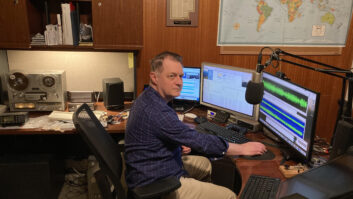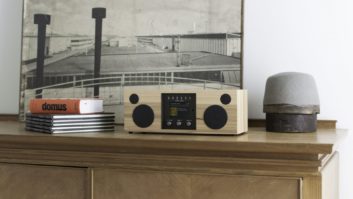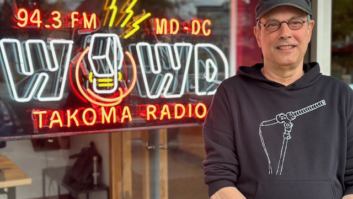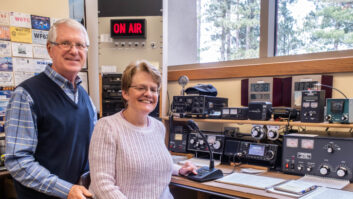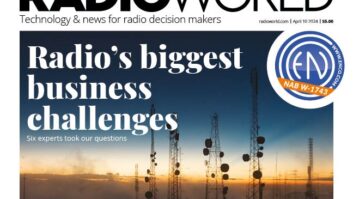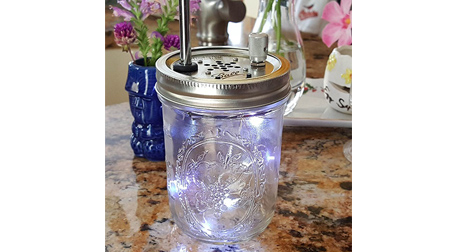
Many public and community radio stations often use gifts to encourage local listeners to donate funds to the station. That same fundraising practice is used by the Cambridge, Md.-based community radio station, WHCP, however the gift being offered is certainly different and unique when compared to that typical public radio mug or t-shirt. WHCP’s general manager talked to Radio World about how his station has become its own mini-manufacturer of a homemade Firefly Radio.
Radio World:Mike, what exactly is the Firefly Radio?
Mike Starling: It’s a single FM station radio built in the lid of a Ball jar with “Firefly” LEDs attached that light up in sync with the programming.
RW:Whose idea was it?
Starling: William Harrison at WETA(FM), who was helpful in getting WHCP on-the-air in 2015, along the way had sent me a Mason jar radio that was one of the last of a kickstarter campaign batch run by two guys in Brooklyn who were the first to our knowledge to put a radio on a Mason jar lid. That radio prompted one of our board members to think about how it could be improved. Adding top lid tuning was one step, but canning jars remind us of the special memories our moms and grandmas went into canning homemade jams to delight us all year round. And of course what kid didn’t repurpose those jars to capture lightning bugs and poke holes in the lids of our mother nature’s special lanterns on hot summer nights? Homemade mystical delights year round? Sounds like homemade radio to us!
RW:Who builds them and how?
Starling: WHCP Board Member George Vojtech runs the technology company Eastcor Engineering in Easton, Md. In his design team’s copious spare time between 2 and 5 a.m., they made several breadboard iterations this past summer, then other public radio groupies we told about the project suggested the Firefly. George immediately latched onto the idea and gave it to his design team. To get the units to market with the small initial quantity, this year the circuit boards were assembled and flown in from China (a DHL strike meant shifting to FedEx and the entire attendant customs imbroglio. Final assembly was completed by the WHCP high school interns, where each radio comes with a QC note from the final assembly intern noting their grade and long term media career aspiration).
RW:What kind of demand have you had?
Starling: We are struggling to keep them in stock at our only retail outlet up the street from us. We weren’t sure any would make it before the holiday so only yesterday did we post availability via our website for shipping to the lower 48. We’ve only got the parts for 1,000 units. If they sell well, we may take on more interns this summer and make a second run with new features.
RW:What else should readers know about this experience?
Starling: People still love radio — nothing beats its simplicity. Nobody knew, including us, that WHCP would be manufacturing and distributing radios when we signed on just 18 months ago. It has become a virtuous circle for our little community radio station. High school interns get electronics assembly and production experience, which everyone loves, and folks love showing off their cool new radio to friends and family, and more and more people listen to us and hear about the station as a positive force in the community. This is what community radio is all about. It’s working with, informing and helping the community. With these radios, we are teaching the interns not only how to run a community radio station, but electronic assembly. Our plan is to work with the local high school tech center and as follow-on orders come in have students handle full assembly, programming and testing the radios. Nothing wrong with bringing small-scale manufacturing back to our town either!





